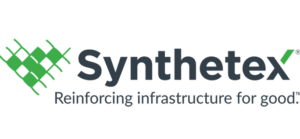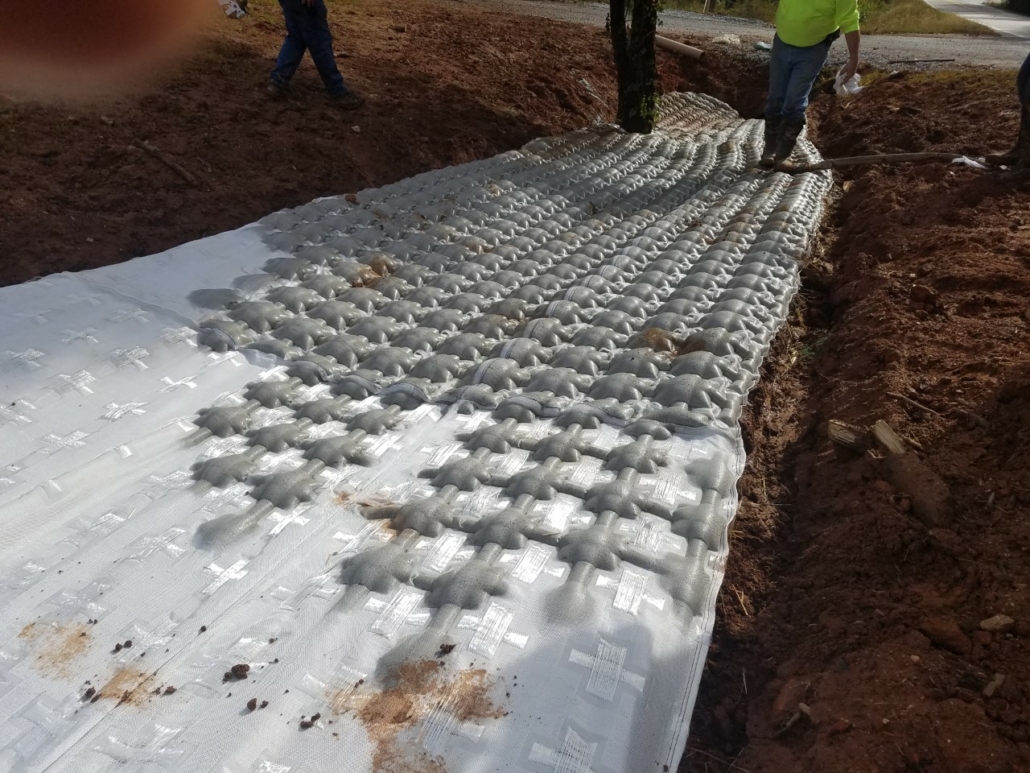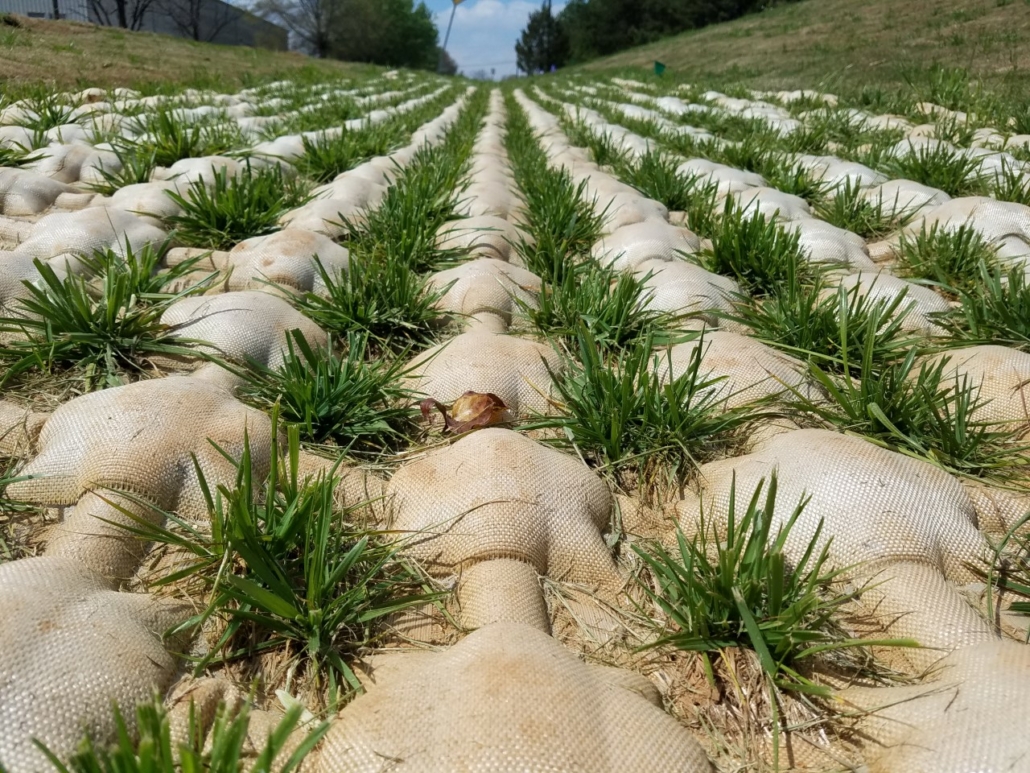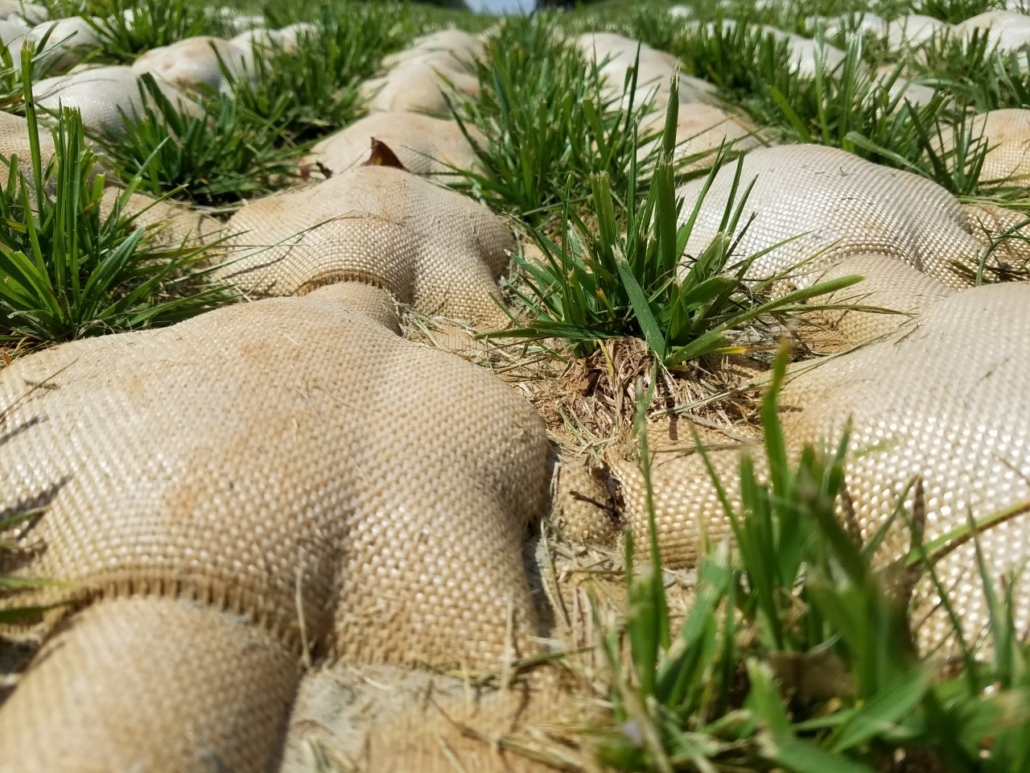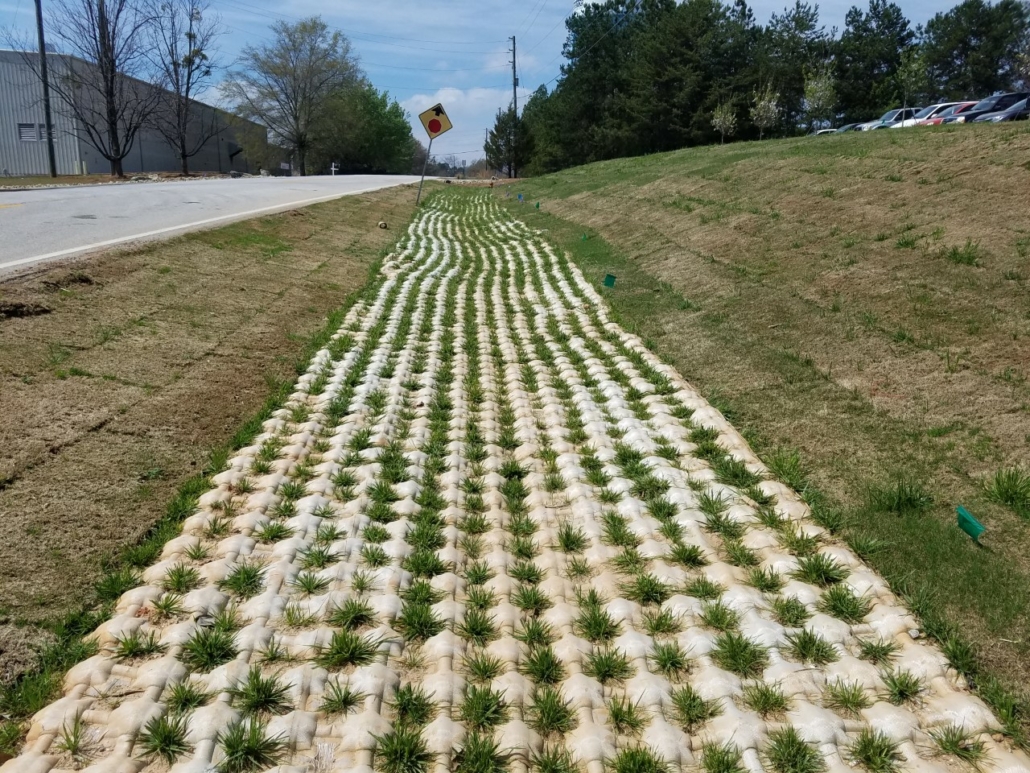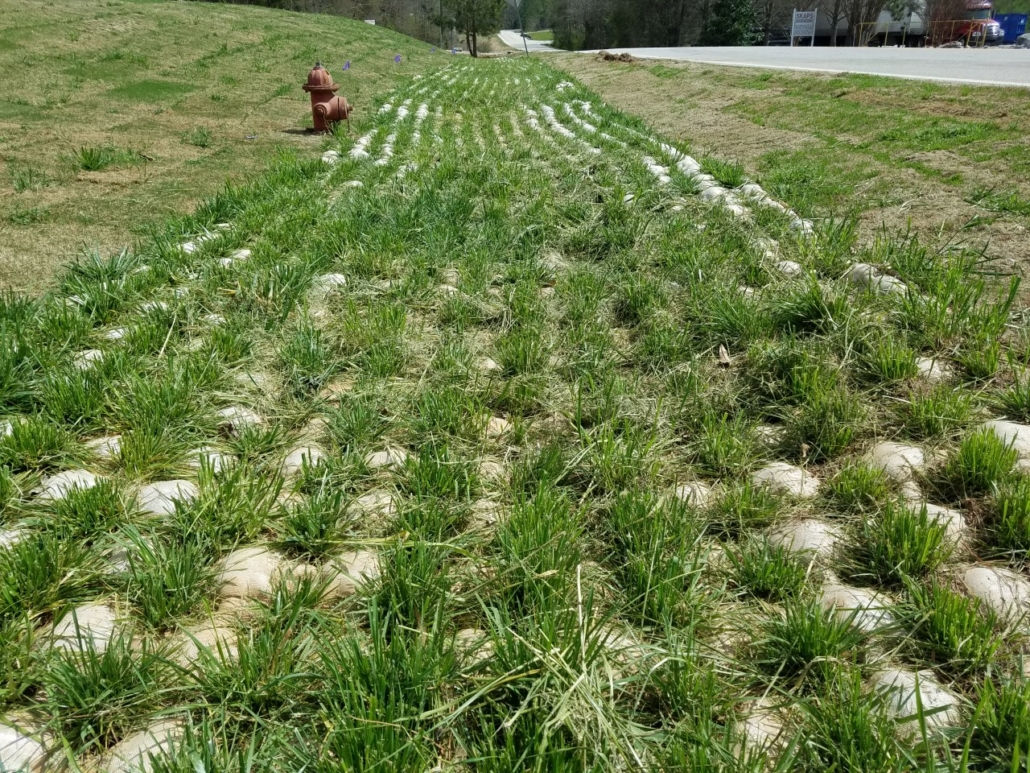Tied Concrete Block Mats vs. Synthetex’s Enviromat FX
Are you looking to prevent and control erosion along drainage ditches, upper channel slopes, outfalls, embankments, or any number of other surfaces that can be ravaged by runoff, current scour, or wave action? If so, you may find yourself weighing the relative merits of one product—Tied Concrete Block Mats—against our Synthetex HYDROTEX fabric formworks.
Specifically, our Enviromat Concrete Linings provide many advantages over Tied Concrete Block Mats, saving you time, money, and hassle while delivering top notch performance over the long term. In this blog post, we’ll run down the basics of our Enviromat FX solution—and detail just how well it stacks up against the competition!
TIED CONCRETE BLOCK MAT
Tied Concrete Block Mats (TCBMs) consist of precast concrete components cast within a geogrid to protect ditches, channels, boat ramps and launches, banks, bridge abutments, and other surfaces vulnerable to hydraulic erosion and velocities. After being shipped in rolls of precast concrete mats to the installation site, they’re typically rolled out and/or slid into place with trackhoes and skid steers out atop some sort of preinstalled underlayment. Tied Concrete Block Mats are often designed in applications requiring vegetation, which has aesthetic as well as ecological benefits.
SYNTHETEX HYDROTEX ENVIROMAT CONCRETE LININGS
Our Synthetex Enviromat Concrete Linings are among our many innovative HYDROTEX fabric formworks. As compared with the precast concrete used in Tied Concrete Block Mats, our Enviromat FX solution consists of geotextile fabric forms laid out at the site by hand labor, not trackhoes and skid steers. Once placed, the Hydrotex FX panels are pumped with high-strength fine aggregate concrete. The ability to lay out an unfilled fabric formwork to exactly match the contours and dimensions of a channel, ditch, embankment, or other structure allows for complete customization and ease of installation. This installation method eliminates the waste at the end of the competition’s standard roll lengths.
The Enviromat Concrete Linings incorporate geotextile fabric areas that remain unfilled after the rest of the mat has been injected with concrete. After the concrete has set, these unfilled fabric segments allow for vegetation to establish through them. Either a preseeded bed, or directly planted with willow stakes or other plantings, or primed with topsoil and then seeded – within a single growing season, the Enviromat Concrete Lining will typically have a comprehensive vegetative cover.
Such plantlife provides visual appeal, of course: obscuring the fabric formwork, softening the contours, and evoking naturally vegetated slopes, banks, and channel bed slopes. But there’s more to it than that: vegetation can further stabilize and shield a lined surface, and slow the pace of runoff and sheetflow while dissipating its potentially destructive energy. Plants also naturally filter and decontaminate soil and water, and, of course, offer a slew of other ecological services, including wildlife habitat and photosynthesis.
DECIDING BETWEEN TRADITIONAL PRECAST TIED CONCRETE BLOCK MATS & HYDROTEX ENVIROMAT CONCRETE LININGS
Being precast at central manufacturing facilities and then delivered (often over significant distances) to project sites, Tied Concrete Block Mats require substantial numbers of flatbed trucks, resulting in the following:
- High freight cost
- Increased environmental impacts from increased flatbed trucks on the roads
- Elevated highway safety impacts
- Impact to roadway maintenance and repair cost
Because it is precast on standard roll widths and lengths, TCBMs offer less fine-tuned customization than Enviromat. entail significantly greater shipping costs and installation equipment (trackhoes and skid steers) costs and manpower. A single truck ships 200,000 sq feet of the space-efficient, unfilled Enviromat formworks, whereas roughly forty-two (42) flatbed trucks would be required to transport the same volume of precast TCBMs (at 4,800 sq ft per truck).
Unrolling the precast concrete TCBMs requires more machinery and labor than installing the HYDROTEX geotextile forms, which can be easily positioned and maneuvered ahead of pumping with fine aggregate concrete.
OTHER ADVANTAGES OF SYNTHETEX HYDROTEX ENVIROMAT CONCRETE LININGS FOR EROSION & SCOUR PROTECTION
The ability to exactly customize Enviromat Concrete Linings for your site’s specific physical and design requirements is a major attribute of the HYDROTEX fabric-formed (and sometimes referred to generically as fabriform) concrete solution. Again, the reduced shipping cost and ease of installation, without the same need for large work crews and heavy machinery, are also highly attractive to budget and time-conscious managers and owners.
Besides protecting against hydraulic energy in a variety of ditch, channel, and embankment settings, Enviromat Fabric Formed Concrete Linings offer the opportunity to revegetate and protect water impacted structures and provide durable, low-maintenance protection long into the future.
Our Synthetex engineers also provide consultation and field questions about the installation process and equipment needs for the contractors installing the formworks, as well as on-site support. This ensures smooth and efficient installation and optimum extended performance.
GET IN TOUCH WITH SYNTHETEX TO LEARN MORE ABOUT WHAT HYDROTEX ENVIROMAT CONCRETE LININGS CAN OFFER YOU
You can check out more detailed product specifications, explore case studies, and view a gallery of HYDROTEX Enviromat Concrete Linings in action right here.
If you have questions about whether Enviromat FX Concrete Linings (or another HYDROTEX fabriform solution) are ready for your site and project needs, don’t hesitate to get in touch with the Synthetex team! We’d be more than happy to supply additional information, and advise how these fabric-formed concrete products could work for a particular infrastructure or specific environment. We’re available for free consultations by calling 1-800-253-0561 or 770-399-5051, or by contacting our office.
